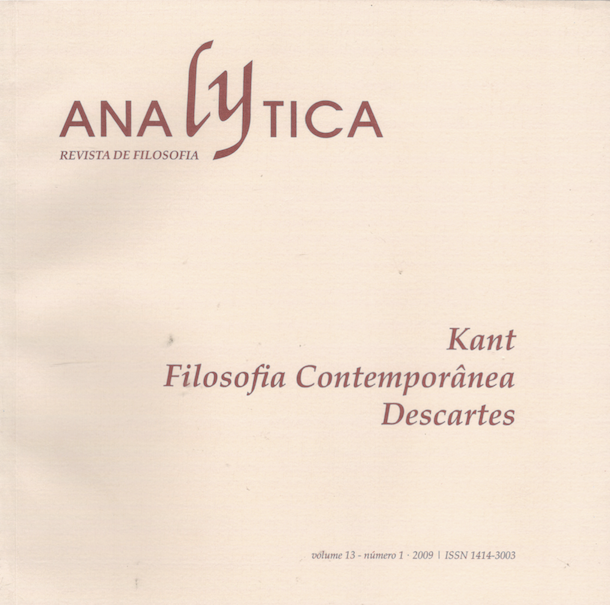É possível definir arte?
Resumo
Este artigo apresenta uma análise da disputa entre Arthur Danto e Morris Weitz a respeito da possibilidade de definir a essência da arte. Weitz, um dos primeiros filósofos analíticos a tratar do tema da arte, colocou a questão em termos wittgensteinianos, e concluiu, a partir da sua interpretação dos conceitos de jogos de linguagem e de semelhanças de família, a impossibilidade de definir "arte". Danto, apesar de concordar com a interpretação de Weitz, defende que é possível, sim, definir o conceito arte. Como há uma concordância entre Weitz e Danto com relação à interpretação desses conceitos, o artigo pretende explicar como puderam chegar a conclusões opostas, confrontando-os com as teses dasInvestigações Filosóficas de Wittgenstein. O objetivo é mostrar que ambas as interpretações do texto de Wittgenstein estão erradas, que a oposição entre eles é apenas aparente e, finalmente, que a teoria da arte de Danto é mais ampla, complexa e coerente, apesar de algumas inconsistências.
Abstract
This article presents an analysis of the dispute between Arthur Danto and Morris Weitz about the possibility of defining the essence of art. Weitz, an early analytic philosopher working on the topic of art, put it in wittgenstanian terms and concluded, from his interpretation of language games and family resemblances, that it is impossible to define "art." Danto, in spite of agreeing with the interpretation of Weitz, argues that it is possible to define the concept of art. As there is a correlation between Weitz and Danto regarding the interpretation of these concepts, the article aims to explain how they managed to reach the opposite conclusions, confronting them with the theories of Wittgenstein's Philosophical Investigations. The goal is to show that both interpretations of Wittgenstein's text are wrong, that the opposition between them is only apparent, and finally that Danto's theory of art is broader, more complex and coherent than Weitz's, despite its inconsistencies.
Downloads
Downloads
Publicado
Como Citar
Edição
Seção
Licença
Os autores que publicam nesta revista concordam com os seguintes termos:
- Os autores mantêm os direitos autorais e concedem à revista o direito de primeira publicação, com o trabalho simultaneamente licenciado sob a Licença Creative Commons Atribuição-SemDerivações 4.0 Internacional (CC BY-ND 4.0), que permite a redistribuição, comercial ou não comercial, desde que a obra original não seja modificada e que seja atribuído o crédito ao autor.
- Os autores têm autorização para assumir contratos adicionais separadamente para distribuição não-exclusiva da versão do trabalho publicada nesta revista (ex.: publicar em repositório institucional ou como capítulo de livro), com reconhecimento de autoria e publicação inicial nesta revista.
- Os autores têm permissão e são estimulados a publicar e distribuir seu trabalho online (ex.: em repositórios institucionais ou na sua página pessoal) a qualquer ponto antes ou durante o processo editorial, já que isso pode gerar alterações produtivas, bem como aumentar o impacto e a citação do trabalho publicado (Veja O Efeito do Acesso Livre).


